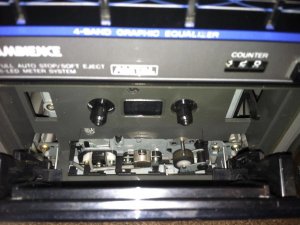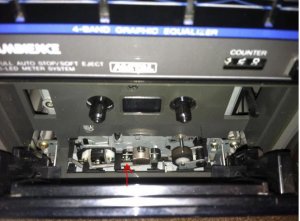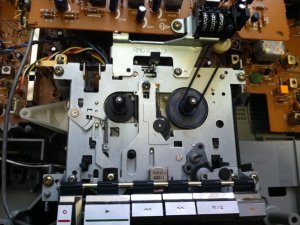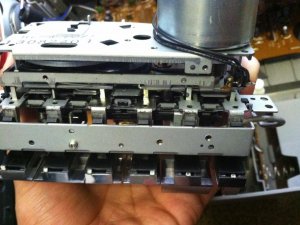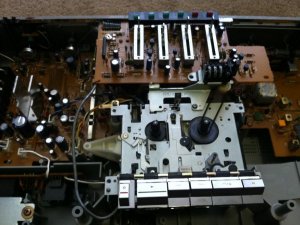To be honest, that pinch roller looks fine to me, just accumulated some residue over the years that looks absolutely normal. You can clean that roller to make it look and perform like new again, which is what I would recommend. Removing that roller also involves a bit of risk and if you don't know what you're doing, could cause more harm than good. The simplest thing to do is buy some of the long swabs available at electronics repair places or online. They look like regular q-tips but the tips don't shred easily and are stiffer, and they are much longer to allow you to reach. Use 100% tech grade (or strongest you can find) Isopropyl alcohol and scrub. That should restore the grip to like new.
As for the adjustment screw, I don't suggest you go there either. That setting does not change from factory unless someone tinkers and adjusts it when they should not. Once set by the factory, the screw is coated with a setting compound to prevent change. It is usually adjusted from factory with the aid of an oscilloscope although I'm sure some folks here will tell you to adjust it by "ear." However, that won't give you 100% accurate setting. With the aid of a scope, you can actually see when the heads are in perfect phase.
Keep in mind that a lot of older tapes won't perform like new anymore. I have some tapes that looks fine but have so much friction they cause the deck motor to stop in it's tracks. Playing a different tape is no problem. Trying to fix that would be like chasing ghosts. Record a new tape session and replay it. If the "new" tape works well without the issues you mentioned, then forget about messing with the mechanism. It's probably the tapes.
Did you demagnetize your heads yet? A lack of high frequencies is frequently a sign of a head that needs degaussing. Also, you should try the record bar cleaning trick. That is to engage/disengage the record function many times (as much as 50) to try to work oxidation off that switch. Over years of unused, oxidation builds up which inhibits proper signal strength from passing. A better way to clean it is to introduce some solvent into that switch but I would suggest employing the trick above first to see if there is any improvement.
Lastly. The issue with the equalizer lights.... I reviewed the circuit diagram for this model and it's as I thought. The equalizer gets it's signal by tapping directly into the preamp line. So as long as the equalizer works in the other modes, it should work on the tape mode too. However, it's not a linear response. Rather at low signal levels, it may not light at all. If you record a program with louder audio, it should work fine. Right now, I suspect your cassette audio is too quiet to register for the equalizer.



